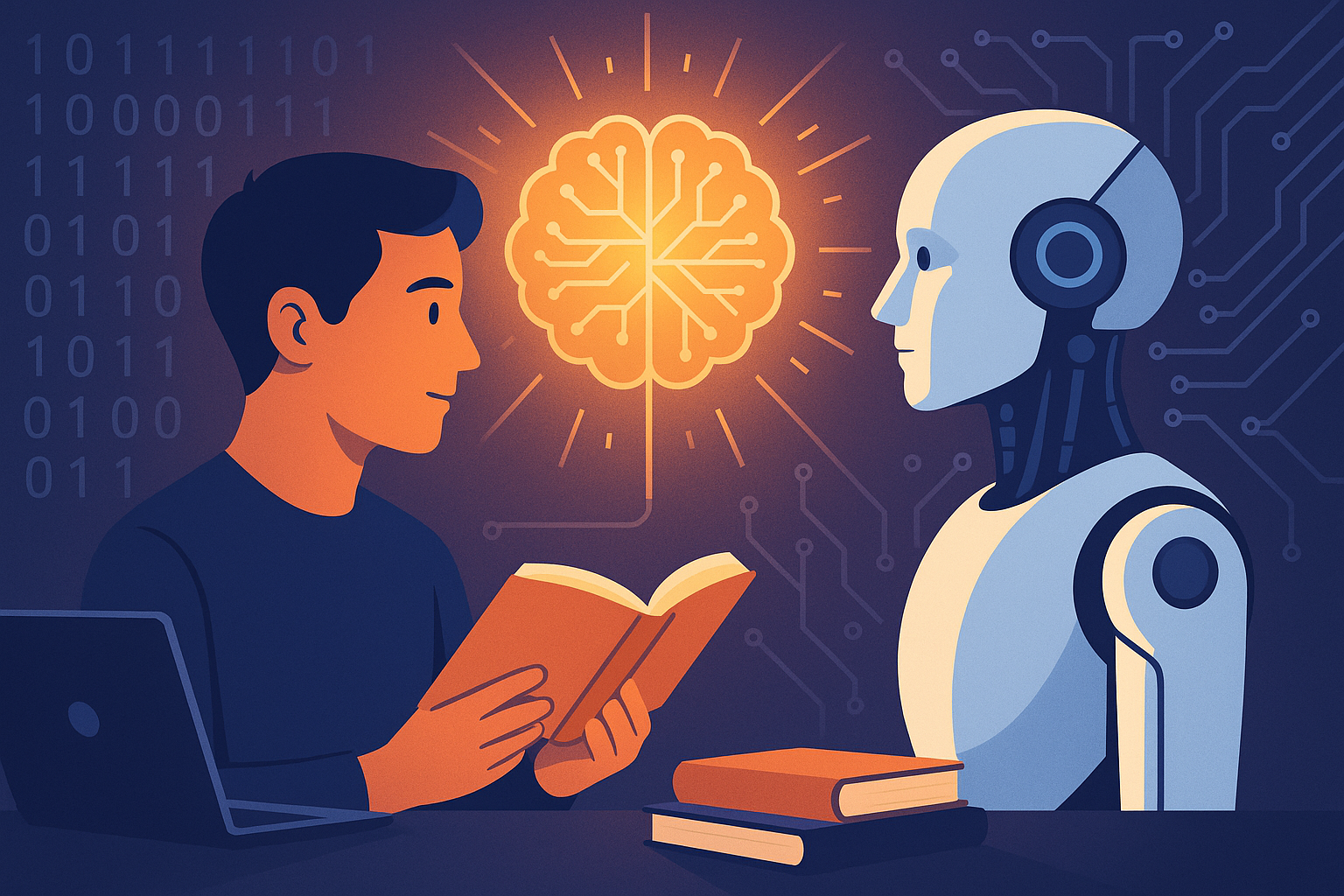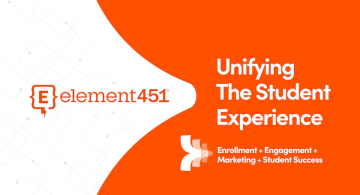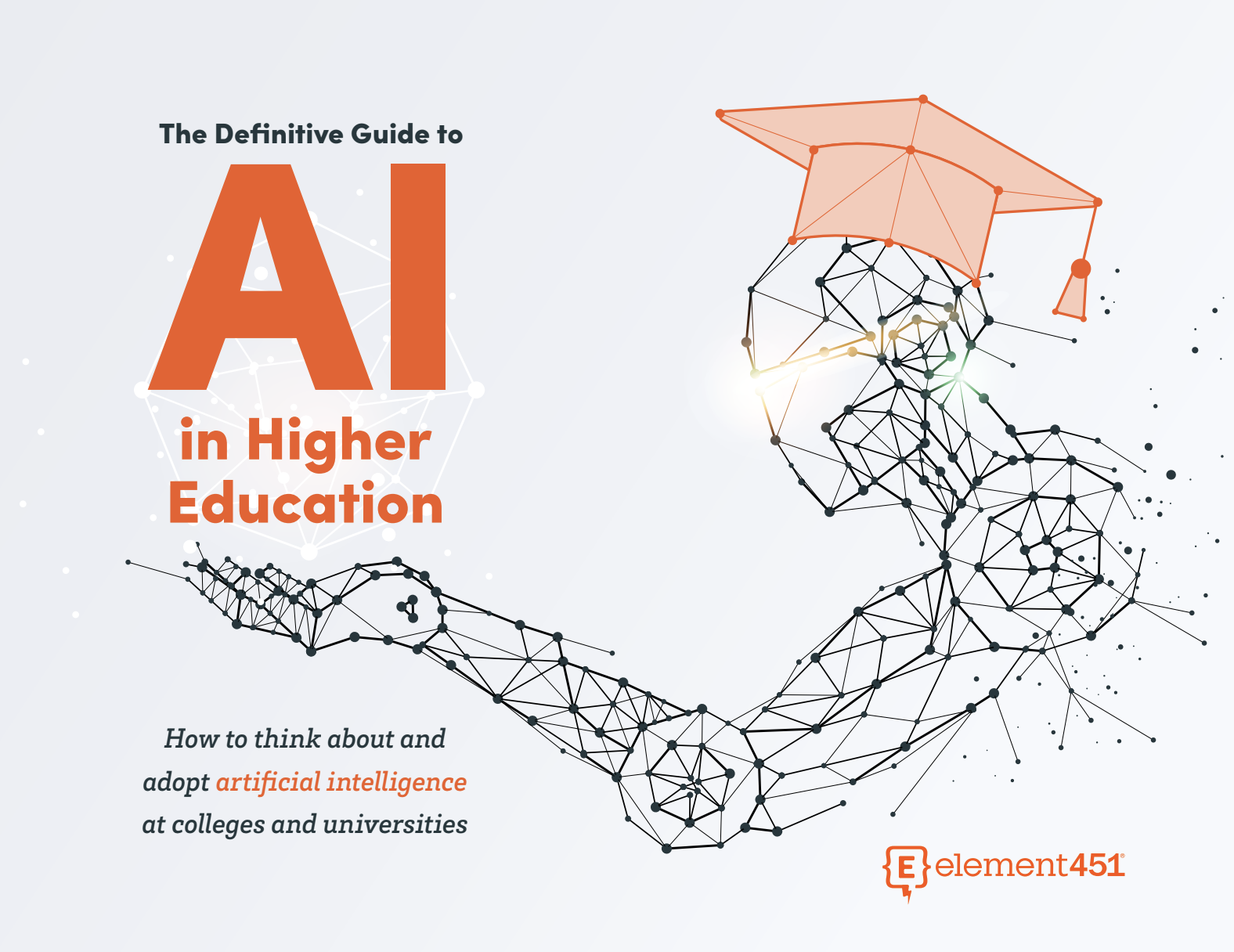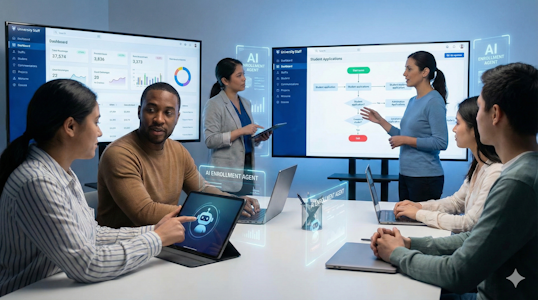AGI Is Coming Faster Than We Think—Is Higher Ed Ready?
by Ardis Kadiu · Updated Jul 16, 2025

If you had told me five years ago that we’d be seriously discussing artificial general intelligence (AGI) as a near-term reality, I would’ve smiled politely and changed the subject.
Not because I didn’t believe in the power of AI, but because AGI—the kind of AI that learns, adapts, and reasons across any domain—still felt like science fiction. But here we are in 2025, having real conversations with real implications, and the urgency of the moment is undeniable.
This isn’t about distant futures. It’s about what happens when intelligence becomes cheap, instant, and everywhere—and what that means for education.
The Shift from “If” to “When”
We opened Episode 80 with a simple provocation: What happens when AI becomes smarter than humans at almost everything?
Not in 50 years. In five.
AGI used to be a moonshot. Now, the CEOs of labs like OpenAI, Anthropic, and DeepMind are openly stating that they not only know how to build AGI, but that they expect to deliver on it within the decade. Sam Altman says that before the end of the current U.S. presidential term. Dario Amodei from Anthropic says by 2026.
Let that sink in.
Even if you think they’re hyping the timeline, the trends are undeniable: Computing power is growing exponentially. Capabilities are evolving faster than ever. Costs are dropping. Adoption is exploding. Adoption is exploding.
AGI is no longer hypothetical. It’s imminent.
From Co-Pilot to Peer
Today’s AI tools are incredible specialists. They write, summarize, code, translate, and recommend with startling precision. But they’re still narrow—they excel at one thing at a time.
AGI is something else entirely. Think Leonardo da Vinci—not just a brilliant painter or scientist, but someone who could fluidly move across domains. That’s the leap. AGI can reason, adapt, and apply ideas across contexts without task-specific training.. It just figures it out.
AGI won’t just support human thinking—it may outperform it.
So What Happens to Work?
This is where JC and I got both excited and uncomfortable.
We’re entering a world where machines can outperform humans at economically valuable tasks. Not just factories—knowledge work: law, engineering, design, marketing. Maybe even CEOs.
AI can already write code, analyze data, and draft business strategies. With AGI, it could do those things better than we ever could—end-to-end. That means increased GDP. That also means massive disruption. AGI will boost productivity. But it could also widen inequality, displace jobs, and reshape entire industries if we’re not intentional about what comes next.
What Does This Mean for Higher Ed?
This is where things get personal for me.
For centuries, higher ed has delivered on three promises:
- Transferring knowledge from experts to students.
- Certifying competence through degrees.
- Building community and networks.
If AI can teach anything better than a human, in any language, with infinite patience, why sit through lectures? If AI can outperform a human with a degree, why does the degree matter?
It’s a gut punch. And we need to talk about it.
But there’s hope. Because one thing AGI can’t replace? Human connection. And that’s where higher ed still holds power.
The Three Universities of the AGI Age
We explored three possible futures:
- The University of Human Edge: Faculty become mentors. Learning focuses on emotional intelligence, creativity, ethics, and meaning. Think small seminars, apprenticeships, and real human-to-human learning.
- The Stewardship University: Universities take the lead in guiding how AGI is developed and used responsibly. They become the ethical and interdisciplinary counterbalance to corporate labs chasing scale.
- The Lifelong Learning Platform: Institutions become agile, AI-powered hubs for upskilling and reskilling across a person’s entire career, not just a four-year window in their late teens.
These models aren’t mutually exclusive. They’re starting points. And they’re choices we can make today.
So, What Now?
If you’re reading this, you probably work in or around education. Here’s my plea:
Don’t wait.
Don’t assume you have decades to figure this out. Narrow AI is already changing the game. AGI could be here within five years.
Start experimenting. Use AI in your classroom. Test it in your workflows. Ask your students how they’re already using it (because they are).
And most importantly: double down on what makes us human. Curiosity. Empathy. Collaboration. Meaning-making. When intelligence is abundant, humanity is what will stand out.
The future of work is changing.
The future of education must change with it.
Let’s not get caught flat-footed.

About Element451
Boost enrollment, improve engagement, and support students with an AI workforce built for higher ed. Element451 makes personalization scalable and success repeatable.
Categories
New Blog Posts

The Definitive Guide
AI in Higher Education
Bridge the gap between the latest tech advancements and your institution's success.
Related Articles

Talk With Us
Element451 is the only AI Workforce Platform for higher education. Our friendly experts are here to help you explore how Element451 can improve outcomes for your school.
Get a Demo








